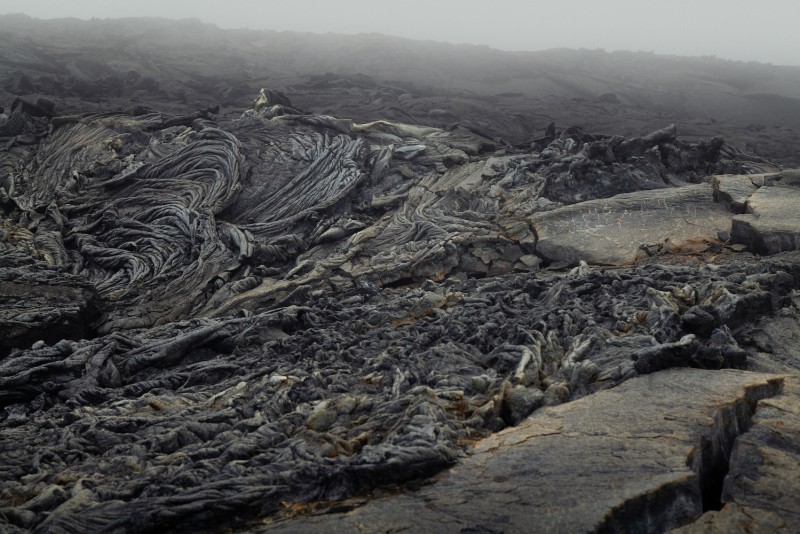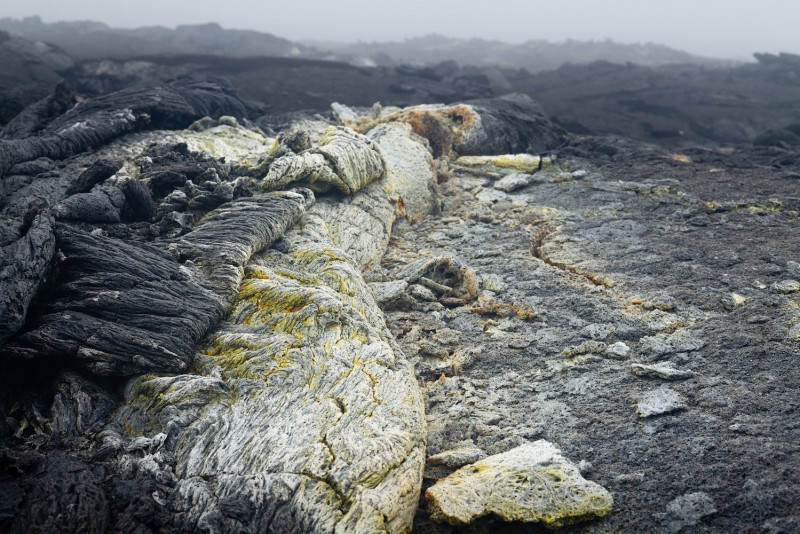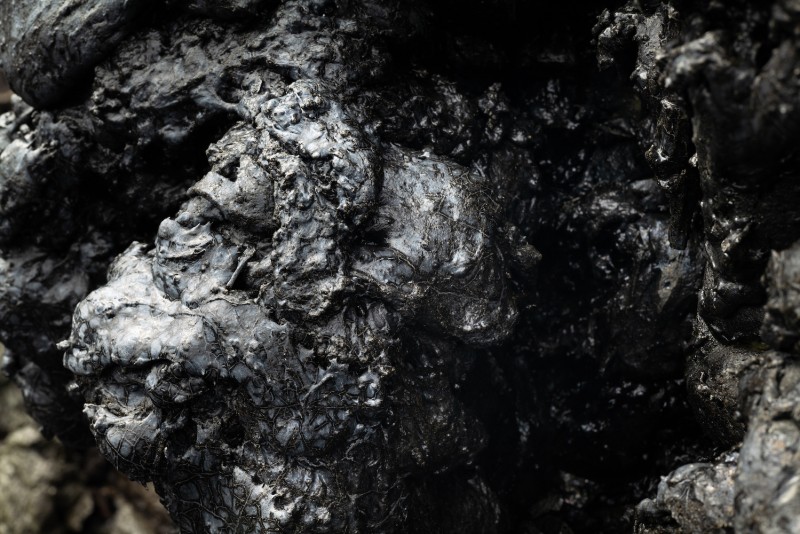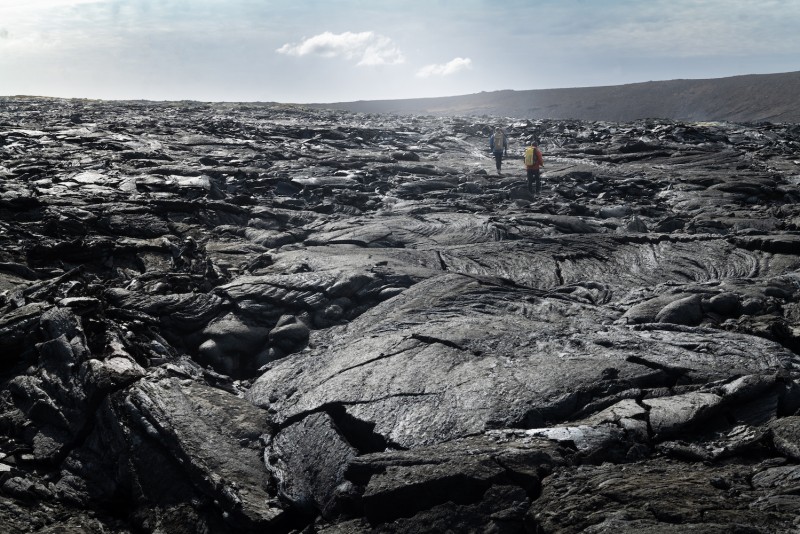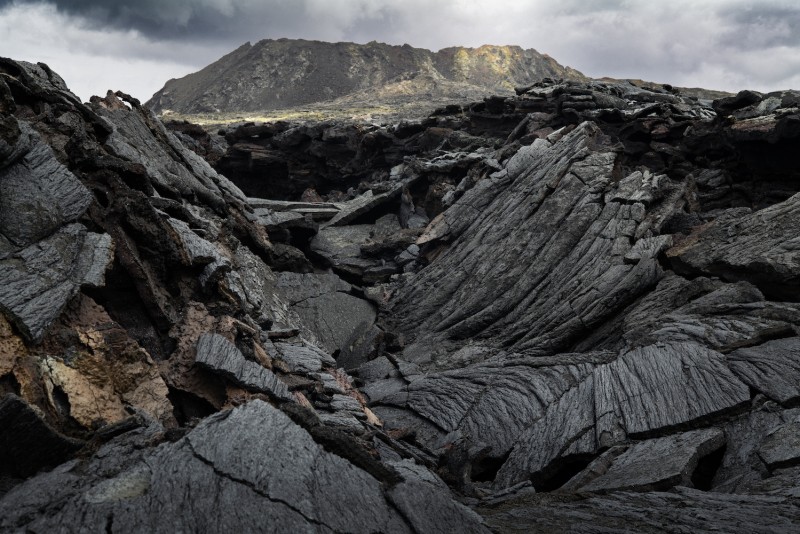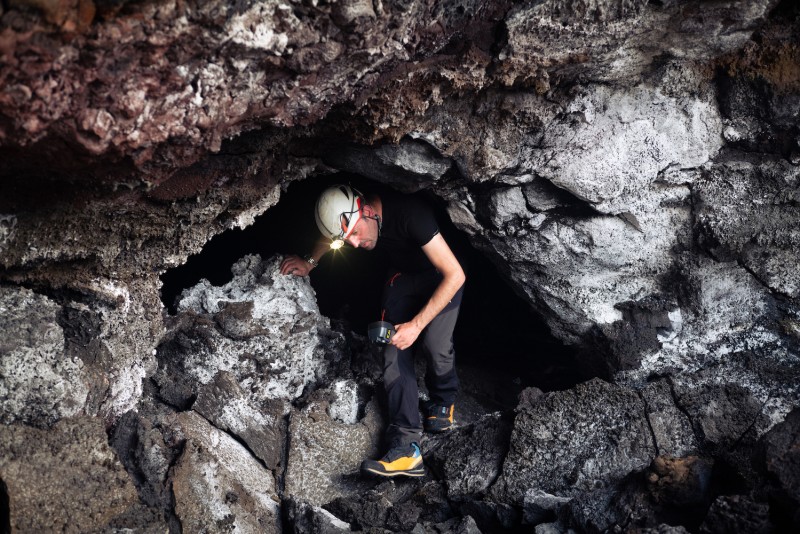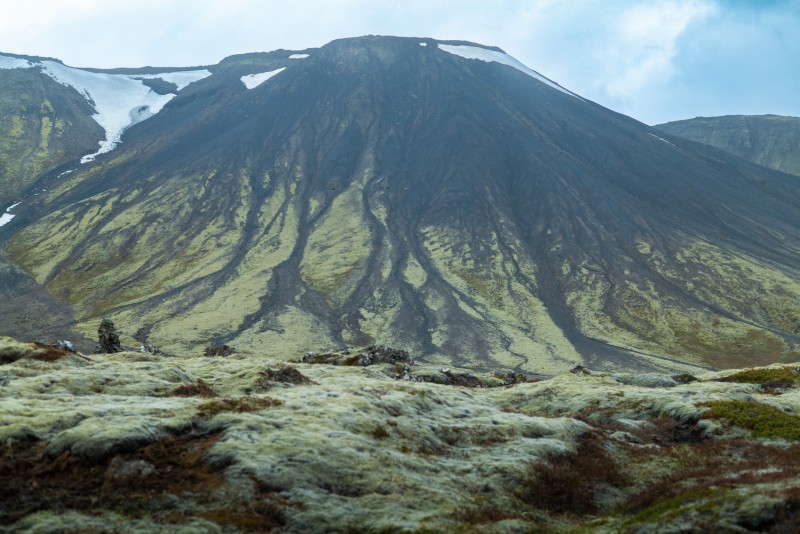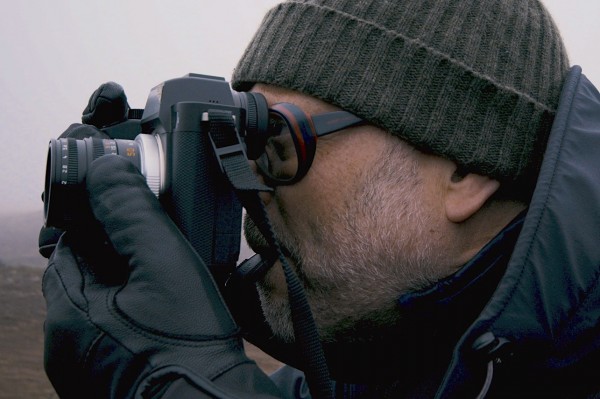Into the Earth
Into the Earth
Lars Ostenfeld
February 2, 2023
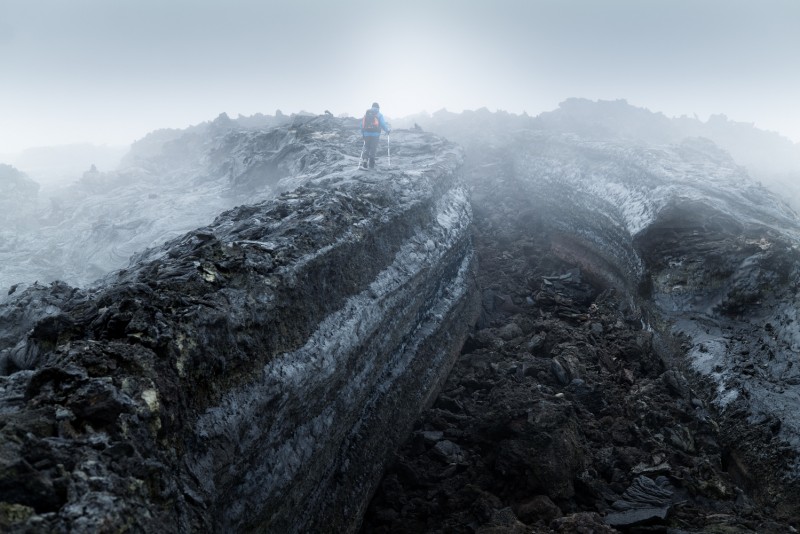
LFI: Where exactly did you take the photos and how long will this project last?
Lars Ostenfeld: The Fagradalsfjall volcano erupted from March to September 2021, providing one of the most spectacular examples of shield volcano emplacement observed in recent times. After one year following the eruption, lava tubes will be at least partially accessible, being in a transient cooling phase. This was a unique occasion to explore the tubes. And I was there with the researchers in May 2022. This was my first trip to the lava landscape in Iceland, and it stirred deep memories. The black lava formations are so strange and beautiful. And the quality of the light and the enormous scale of everything — it's an encounter with nature that fills you with humility.
What do you want to show with the pictures?
My starting point is always curiosity. We think we know Earth; but we have literally just scratched the surface. I'm currently working on a film about a scientific quest and one of mankind's biggest dreams: can there be life in outer space? And as incredible as it sounds, the answer can be found on Earth. On July 26, 2022, NASA tweeted: "Lunar Reconnaissance Orbiter images of pits indicate that the Moon has caves. And it goes on: "Scientists have discovered that parts of the pits are always about 17°C, differing from extreme temperatures on the Moon's surface." I follow Prof. Francesco Sauro, from Planetary Geology at the University of Bologna, one of the leading experts for caves. He is a scientist bent on a lifelong mission of discovering the life that dwells deep within the Earth. By looking at Earth, they learn to look at other planets and become field scientists for geological research on the Moon and later on Mars.
From a photographic point of view, what is the biggest difference between these images and your 'Into the Ice' project? Did you have to change your photographic approach?
The colour palette, subdued and monochromatic images coming from a world that is just black hot lava and dust, is so full of contrast and different from my work in Greenland, with its white and blue, cold ice landscapes. But that's where the differences end. Walking on the brittle, crunching lava sounded like walking on ice. And like the ice desert, the lava area was practically a dead landscape. My approach to photography was very similar - driven by curiosity.
Visually speaking, what caught your attention in this seemingly endless wasteland?
It struck me that the combination of lava, gases, and ash coming from the volcanoes has created entire archipelagos, our atmosphere, and has made the earth fertile. Life itself may have begun in a volcano. At the same time, giant volcanic eruptions nearly caused the living world to collapse only 13000 years ago. Nothing is as strong as volcanoes in controlling the earth's system. Volcanoes are life and death. And then, in the middle of this black landscape, life soon emerges. It was quite life-affirming to be there.
What camera and lenses did you use this time and how did it help you in this project?
I used my regular friend for the past few years, the Leica SL2. But this time only with my 50mm M lens. I had to move easily and practically, and wanted to capture the intricate details, colours, sharpness, vibrancy and texture, quickly and sharply.
Lars Ostenfeld+-
Lars Ostenfeld is a Danish director and photographer. He has always been fascinated by nature stories, travelogues and films about landscapes and the people who inhabit or use them. From the red desert of Africa and the green rainforest of Borneo, to the white ice of the Arctic. He is always curious to learn more about the unpredictable processes that explain how the world works. In addition to his films, TV series and photography, he has published 15 books. More

